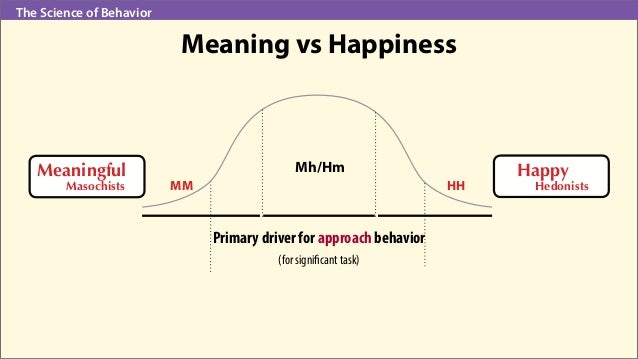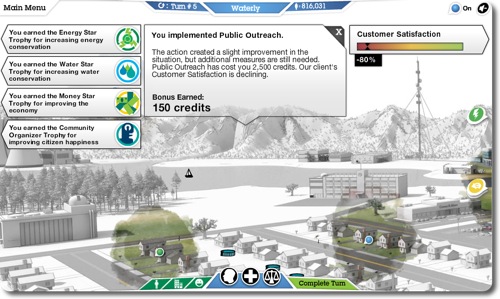But let's start from the top.
It all began with the usual stuff: Kevin Shane, Director of Gamification Co, welcoming us to GSummit and introducing Gabe Zichermann, the "one man show". He then proceeded to mentally prepare us for the awesomeness of the day in front of us and welcomed the oh-so-sharply dressed Aaron Price, responsible for the Livecube app that's fueling the social side of GSummit.

It's a really awesome tweet-driven web app that adds an entire layer of social engagement to events by taking out all the twitter noise and keeping users focused on the chatter of the session at hand. Plus, it allows attendees to interact with the speakers (they almost always get back to you after the session) and it rewards the most active users with really cool prizes (like roundtable sessions with speakers, or a Google Glass(!)), adding that competition factor! :)
After Aaron came Gartner's Brian Burke. I got the sense he was not a particularly well loved guy, especially with the less enterprise-inclined crowd. His presentation included some discouragement on using PBL, which sounded strange after having defined them as key elements in gamification, as well as a continued focus on the digital aspects of gamification as core drives for the "movement". I get what he's trying to say, the tech-part of gamification is a big part of its current driving force, but I think, and many concur, that it's truth mainly for the enterprises and for product-oriented gamification. Real, change behavior gamification, is agnostic to it's media. And many share this opinion.
This made for a almost non-engaging presentation that at times sounded like he was saving face for the controversy he started with his redefinition of the term.
Bill Hanifin's talk on loyalty marketing started to recapture everyone's attention, but I think it was a consensus that he could have concluded with something more. He talked about how loyalty marketing is facing all these obstacles and about its potencial but I believe he really could have closed the circle and stress gamification's importance as one of the ways to bridge some of the gaps he mentioned. In reality, I think he was a good stepping stone for one of the best presentations of the summit 'til that moment.

Eileen Bartholomew took the stage to talk about the X Prize competition. With conviction she began talking about the Spirit of St Louis' epic voyage across the sea to Paris and from there she took off on an inspiring presentation about humanity's ability to innovate. She talked about the power of big prize competitions and how the purse itself didn't matter, the epic meaning of the competition did. It was a really emotional moment, with her voice quavering at times. I felt it moved a lot of us in attendance.
After a moment of respite to restock on coffee, Robert Tercek talked about the advent of a game-based society and the power of the internet of things - creating more and more points of entry for gamified experiences. Not a bad presentation, one more reference to the Internet of Things, but not as good as what followed.
Andrea Kuscewski is an old favourite of mine. I really enjoy her scientific yet non-jargon filled approach to behavioral science. She talked about some of the principles of the subject, particularly about when and why rules don't always work when you're dealing with human behavior. I really liked this interesting graph mapping Meaning and Happiness.

Apparently I'm a Meaningful Masochist. If you're interested (and you should be!), her presentation can be seen here.
Next came another great presentation from the head of the Serious Game program at IBM, Phaedra Boinodiris. It's amazing the type of things IBM managed to accomplish using their serious games strategy. It all started with the Innov8 game, created to drive process model innovation in IT and now City One is teaching players worldwide how to solve real-world business, environmental and logistical problems.

And to end the morning sessions came the great Dr. BJ Fogg. In about half-hour he managed to give a Human Behavior 101 and explained in some detail his behavioral model: Behavior = Motivation x Ability x Trigger. Basically he focused on why sometimes Motivation and Ability are not enough, and why sometimes you need a trigger even for a highly motivated and capable person. That trigger can be something as simple as "hey you, go do it!".
He also approached the power of tiny habits, the concept of decomposing your objectives into the smallest achievable task, and presented is now current work on how to change existing behaviors.
After a network-filled lunch came another great presentation, this time from Nir Eyal. He expanded on the work he did for his book, mainly concerning the popular Hook Model. His instance is called the Hook Canvas and is shown below.

It is perhaps a very marketing-oriented methodology, but the fact is that the biggest metric for mobile apps for example is retention, and according to reports such as this by Fred Wilson, it could be better. And what drives retention? Better engagement. So this hook model is great when you're designing a gamification application that is looking for serious retention rates. And let's face it: who isn't?
Bron Stuckey followed with a presentation focused on education that consisted mainly of case studies with a localized audience. It could have merited perhaps from a more globalized case study, something that demonstrated worldwide applicability or instead some more practical conclusions.
Finally, to end GSummit's day 2, came a double dose of the amazingly energized, low-tech driven Monica Cornetti. First came the presentation on her no-nonsense approach to gamification: start small and cheap, get results quickly, go for seconds! Her call to arms on low-tech gamification was mainly driven by two factors: first of all Gartner's prediction of 80% failure for gamification projects by 2014 and how you could justify to your management that you wanted to use a methodology that Gartner predicts most likely will fail; second, that all gamification efforts should start small and re-iterate quickly, 'cause chances are you're not going to get the results you want on first try. Or second. Her answer was: go cheap to get your results, go low-tech.

And her presentation had this slide - make it addictive.
Her second dose of energy came after the afternoon break in a one and a half hour hands-on lab on how to do low-tech gamification. It consisted of a game called "Game the System" where you and your team are pirates and in a ropes and ladders style board you take your team's token through several stages of her gamification process. If you're interested, it can be accessed here.
It was a really fun-filled session, with Monica sticking to her loud and engaging style of presenting (as could be stated by folks in sessions in another room!), and we were able to take some useful insights on the process. Plus it had great moments like this.

And so ended the sessions component of GSummit 2014's day 2, followed by an on-site after-party sponsored by Bunchball. Networking fueled by nice beer. Awesome.
On a last note, for most of #TeamPregame (the tight group that came out of the pregame livecube experience) the day ended with a nice thai dinner and some more networking and children gushing. Awesomness over 9000.





Great summary of the day :))
ReplyDeleteHey Manuel - thanks for the AWESOME summary and shout out! (Was that loud enough?) :-)
ReplyDeletedon't think they heard it in the other room! :D
Delete